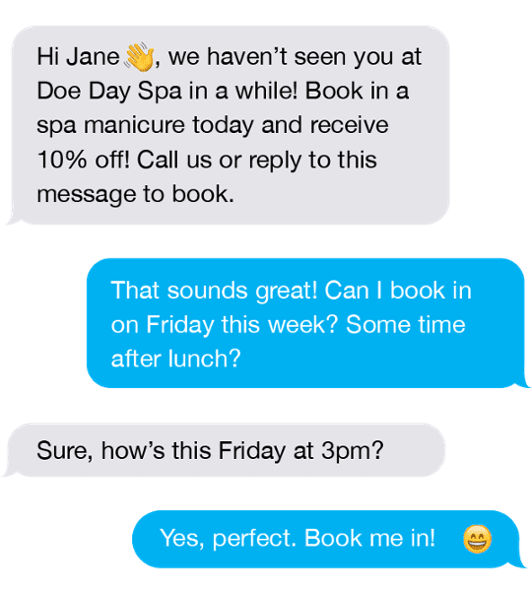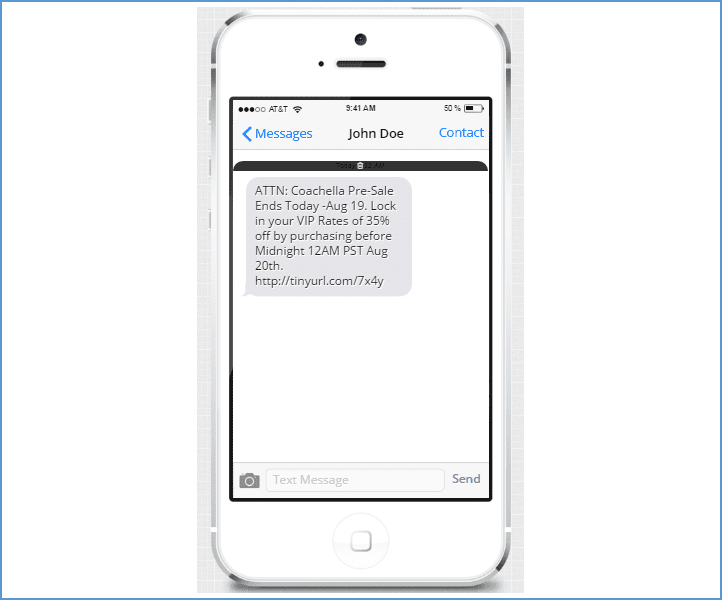Effective customer engagement requires making your customers an integral part of brand creation and not just seeing them as a means of revenue generation
The first short message system (SMS) message was sent in 1992 and the first phone with texting capabilities was released by Nokia the following year. Given the digital communication technologies introduced since then – voice over internet protocol (VoiP), video streaming, and social media – it may be tempting to discount the potential of the humble text message.
You do this at your own peril. After all, SMS response rates are 209% higher than email, Facebook or even phone calls. That’s because 94% of text messages are read and recipients typically respond to them within 90 seconds. In addition, when comparing SMS messages to mobile ads, SMS wins every time.
- Half again as many recipients immediately purchase a service or product on their smartphone.
- Twice as many will go to a store to make a purchase.
- App download rates are three times higher.
So, what are the different ways to leverage SMS? We’ll go over the best options below, so you can determine which ones will generate the greatest return for you.
Why You Need a Customer Engagement Strategy
Effective customer engagement requires making your customers an integral part of brand creation and not just seeing them as a means of revenue generation.
Your customers aren’t looking solely for a product or service that meets their short or long-term needs. In addition, they want an experience that creates additional value throughout the end-to-end transaction lifecycle and beyond.
A robust customer engagement strategy is critical in today’s business environment. Both your existing and potential customers have more companies than ever before competing for their business.
Executed correctly, your customer engagement strategy won’t just have customers coming back for more only because they happened to stumble across you before one of your competitors. Instead, they’ll actively seek you out, as well as recommend you to family, friends and coworkers.
To that end, an effective customer engagement strategy will:
- Generate feedback for current products and services
- Publicize new offerings, features, and updates
- Increase customer retention
- Create additional product and service revenue through add-ons, cross-sells and upgrades
SMS Customer Engagement Strategies
Before you implement or expand your SMS customer engagement plan with the strategies below, there are some rules of thumb you need to keep in mind.
- Get permission first
- Include an easy opt-out option
- Be concise
- Avoid texting shorthand (“How RU today?”) and emoticons
- Offer clear value
- Include a call to action (CTA)
By following the guidelines above, you’ll be able to leverage your SMS to the greatest degree possible. Even better, while customers use smartphones to receive and respond to these texts, you can use computer-based systems, many of them automated, on your end.
1. Sales & Promotion
As noted above, SMS messages have higher response rates than mobile or social media ads. Therefore, if you’re not already using this channel for sales and promotion, you should begin to do so as soon as possible.
Plus, it doesn’t have to be all SMS at the expense of other types of ads. Be sure to continue your other forms of marketing so that customers and potential clients will see you repeatedly.
2. Surveys & Polls
As part of a successful customer engagement experience, you should solicit feedback about your products and services.
First, this allows customers to feel you are interested in what they know as opposed to just the money you collect from them. In addition, this information they give you will be key to effectively shaping future products and services, as well as the offerings for them. Tools like SurveyMonkey’s Mobile Surveys let you build SMS survey and polls to generate results in real time.
You can also tailor surveys and polls to calculate your Net Promoter Score (NPS), this shows you the degree to which customers will or won’t recommend your products and services to others. Knowing your NPS will allow you to compare your score to both industry benchmarks and your specific competitors.
3. Customer Service
SMS-based customer service covers a wide range of activities including updates on packages in transit, airline flight changes and even travelers arranging services at hotels. Regularly scheduled reminders can be sent to customers, including yearly pet vaccinations, routine HVAC maintenance, or even to confirm a previously made appointment for a haircut or eye exam.

These messages can also be triggered by external events. For example, if an unexpected hard freeze is about to occur, you can alert customers in affected areas to bring in plants and leave their faucets dripping overnight.
4. Action-Based Messages
Another way to leverage SMS is action-based messages triggered by a customer. This can be as simple as sending a new customer a message thanking them for buying a product or service as well as, perhaps, asking for their feedback.

Coupon messages can be triggered by customers being within a certain distance of a business. One Pizza Hut case study shows how this process – known as “geofencing” – increased incremental sales by 142% compared to other advertising channels.
SMS for Employees in the Field
Of course, SMS engagement isn’t limited to messages with product or service offers and other information sent from a company’s headquarters to customers. In addition, it can be a key part of managing your team in the field.
For example, a local plumbing company needs a way to communicate with plumbers in the field, as well as customers expecting a plumber at certain times of the day. Solutions like ServiceTitan can be used to community in real time via SMS. Customers no longer have to wait around wondering when – or even if – a service technician is going to arrive. Instead, they can receive status updates or even a link to track a tech’s current location.
Or maybe their problem doesn’t require a service trip at all. Instead, you can answer their questions and relay key information by text. Finally, after service is complete, you can ask via SMS for feedback while the experience is still fresh.
Implementing Your Customer Engagement Strategy
If you choose to leverage SMS via one or more of the strategies above, the first thing to do is be thoughtful. That is, what are the specific goals you want to achieve? What are the key performance indicators (KPIs) which will measure effectiveness? What resources – money, time, staff, hardware, software – will be required?
Once you answer these questions, you’ll then be able to leverage SMS to most effectively meet your needs.